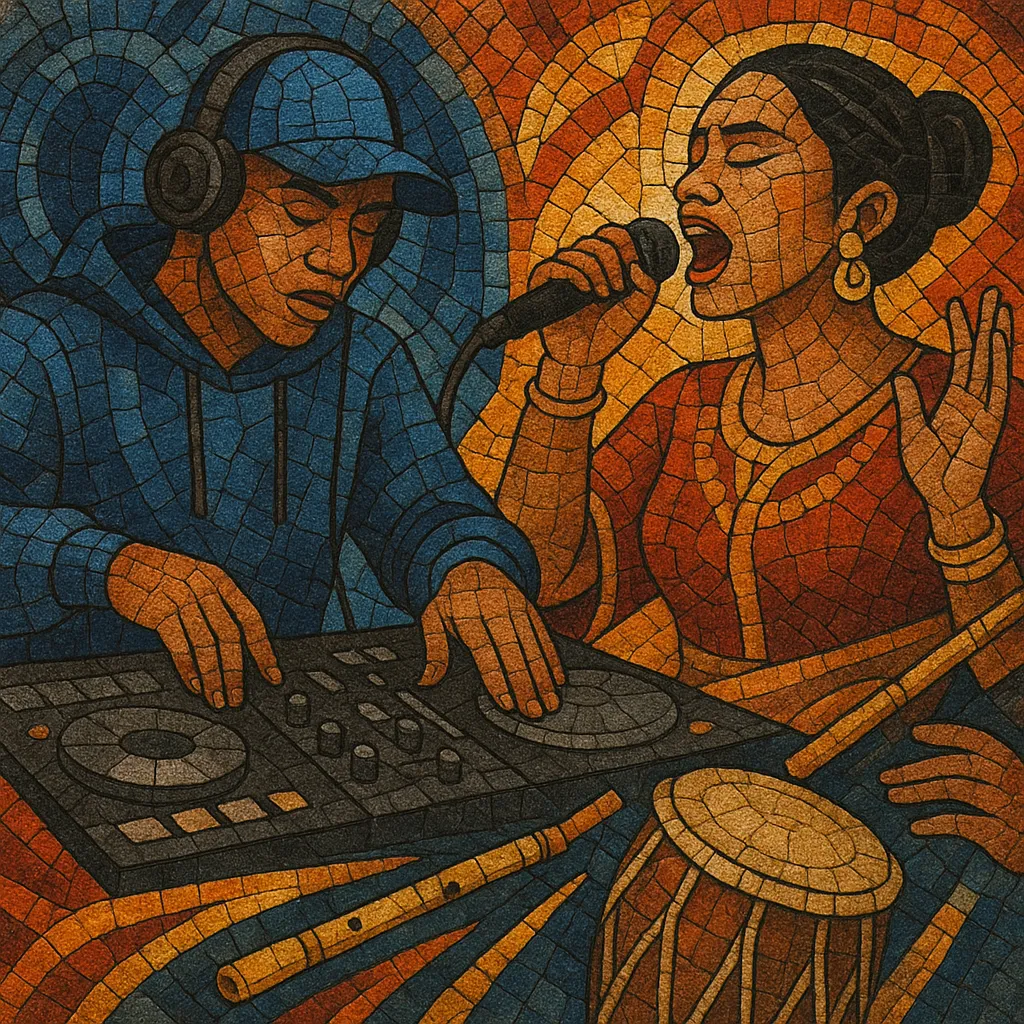Hipdut is a contemporary Indonesian fusion that blends hip hop’s rapped verses and 808-driven production with the rhythmic feel, vocal melismas, and stage culture of dangdut—especially its high-energy koplo variant.
Typically, a Hipdut track alternates between rap sections in Indonesian or regional languages (notably Javanese) and a dangdut-style sung chorus supported by kendang (drum) patterns, suling (bamboo flute) hooks, and bright synths. The result is a dance-forward, street-level pop form that thrives on YouTube, TikTok, and live wedding stages, while reflecting everyday romance, friendship, and youthful resilience.
Hipdut (short for hip hop dangdut) emerged in Indonesia as artists and local scenes began fusing rap delivery and beat-making with the homegrown appeal of dangdut. Early experiments appeared in the late 2000s as digital audio workstations became widespread, but the style cohered in the 2010s when koplo’s faster, club-ready grooves crossed paths with hip hop’s 808s and flows.
The 2010s provided the perfect conditions: inexpensive production tools, the viral potential of YouTube and later TikTok, and a vast live ecosystem of dangdut stages across Java and beyond. Acts associated with Javanese-language rap and local pop quickly found that combining rap verses with dangdut/koplo choruses made songs instantly danceable and crowd-friendly. Crews from Yogyakarta and East Java in particular helped codify the template, bringing Hipdut to weddings, town fairs, and online charts alike.
Hipdut borrows hip hop’s verse-chorus rap structures, sub-bass, and trap-adjacent percussion, then layers them with dangdut’s kendang patterns, ornamented lead vocals, and occasional suling riffs. Many tracks shift between midtempo rap sections and faster koplo breaks, allowing singers to showcase dangdut-style vibrato and cengkok (melodic turns) while MCs deliver relatable, conversational bars.
Today Hipdut thrives as a grassroots, creator-driven style: official labels, live orchestras (OM) and DJ/remix networks coexist with independent rappers and singers. The genre’s flexibility—equally at home in live tenda (tent) shows and short-form video remixes—ensures a steady stream of new hits and regional variants.


